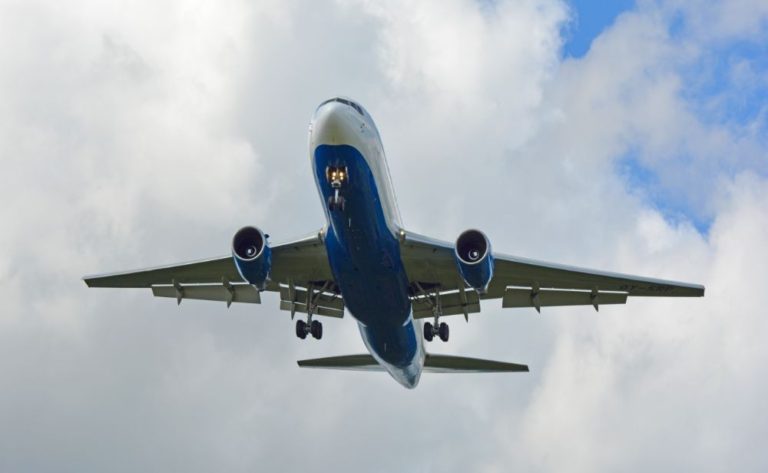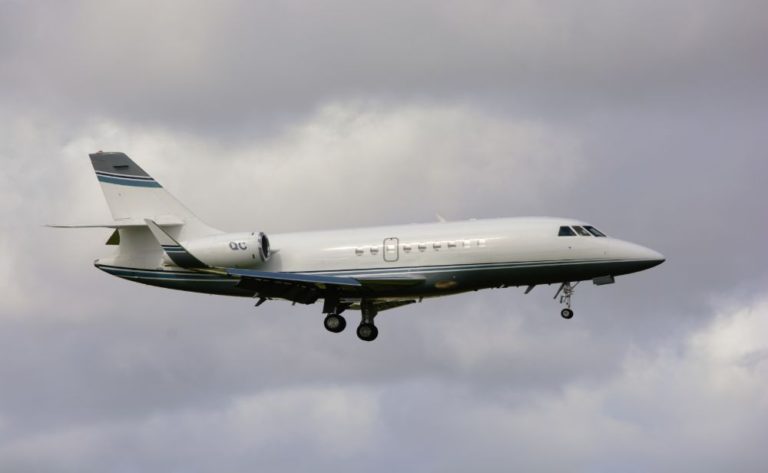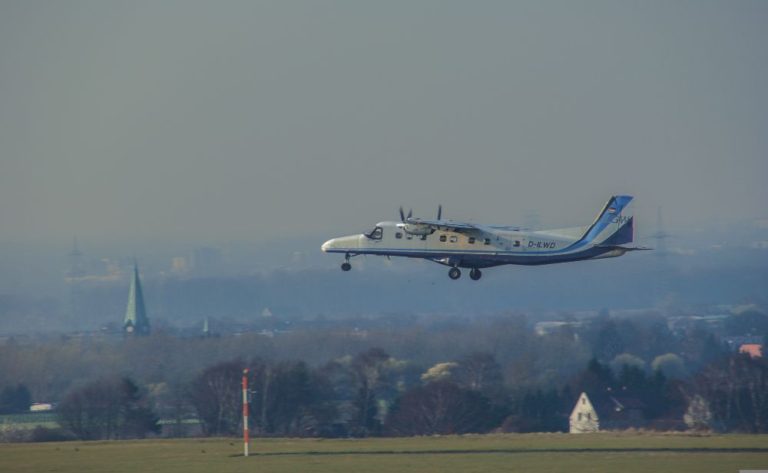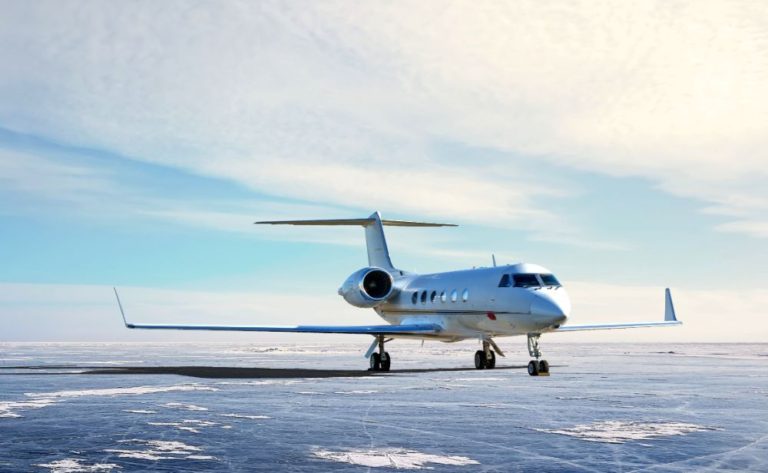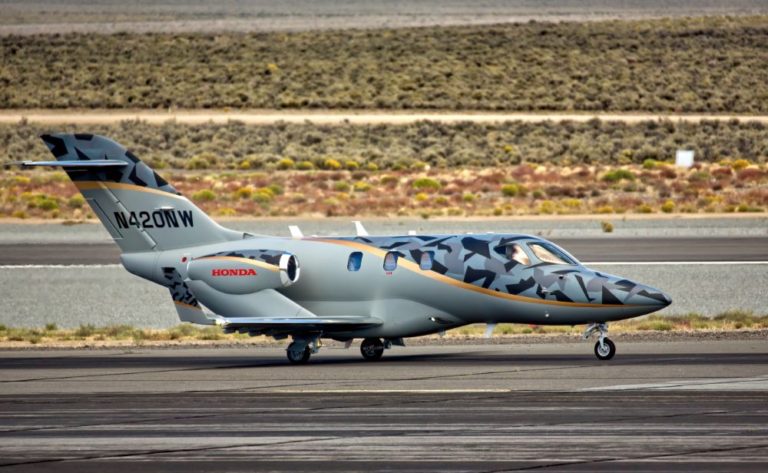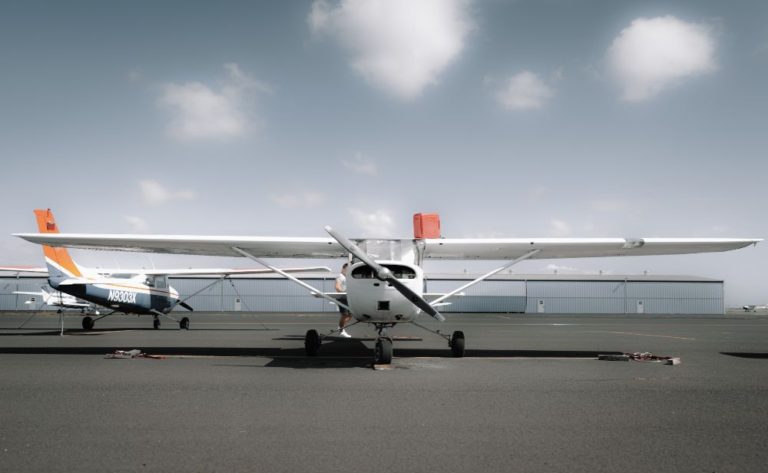Cessna Citation Mustang Guide and Specs : Is It Worth Its Price?

The Cessna Citation Mustang is a very light jet that can be flown by a single pilot and was manufactured between 2006 and 2017, with a total production run of 479 aircraft. While the offerings from Embraer, Cirrus, and Honda are clean-sheet designs built specifically to attack this market, the Citation Mustang is simply another iteration of a tried and tested family with half a century of market presence. Cessna, in particular, is not as enthusiastic about the “very light jet” moniker out of principle.
Model Specifications for the 2007 Cessna Citation Mustang
Because it has a maximum take-off weight of 8645 pounds and a weight when empty of 5600 pounds, it has a practical load capacity of 3,130 pounds. The aircraft is propelled by a pair of rear-mounted Pratt & Whitney Canada PW615F turbofan engines, each of which generates 1460 lbf of thrust. The Mustang may be piloted by either a crew of one or two individuals and depending on the number of pilots who are on the flight deck, it can accommodate anywhere from four to five passengers.
The structural and aerodynamic architecture of the Citation Mustang draws inspiration from earlier light Citation line members. The construction of the aircraft is based on a low-wing cantilever design that makes extensive use of aluminium alloy. It also features a swept wing that is supported by three spars and a high T-tail. Its tricycle landing gear is characterised by having short legs, which is a trait shared by the Citation series as well as its more compact Learjet competitors. One main door, located on the forward left section of the Mustang, provides entrance to the cabin. For usage in the event of an emergency, there is also an escape fitted in the middle of the fuselage. The aeroplane features speed brakes that are electronically controlled and flaps that may be moved between three different positions.
The interior design of the cabin exudes an air of opulence and customarily features four leather seats arranged in a club configuration with a movable table in the middle. After the plane has taken off, this table can be used, but it must to be stowed away before landing. The soundproofing is exceptional, making for a pleasant and peaceful ride that outperforms the vast majority of its rivals. The team responsible for the interior design at Cessna did an outstanding job with the location of the windows, which allows for excellent visibility of the outside without requiring any effort from the passengers. The view that one gets from the flight deck is also considered to be very nice. A toilet is provided as a standard option; nevertheless, its facilities are quite limited in comparison to those of the majority of its competitors; hence, some owners consider it to be a “emergency” alternative. There is a reasonable 57 cu ft of space available in the aft hold, in addition to a compartment in the nose that stretches across the width of the fuselage. Overall, the baggage facilities are satisfactory for its category.
The avionics in the Cessna Mustang are based on Garmin’s best-selling G1000 suite. This suite significantly lessens the amount of work that needs to be done by the pilot and makes it possible for a single crew to operate the aircraft with much greater ease than was possible in earlier iterations of the Citation jet due to its high level of automation. One primary flight display (PFD) is located on either side of the flight deck, in addition to the one multifunctional display (MFD) that is located in the centre of the flight deck. The data is entered using a keypad that is put beneath the throttles. This eliminates the need for users of other suites to go through the ordeal of turning an unending number of knobs. The trim controls for the elevator and aileron are located right next to this. Controls for the GFC700 autopilot are situated atop the instrument panel adjacent to redundant steam gauges for the airspeed, altitude, and horizontal situation indicator (HSI).
An electrically-powered dedicated hydraulics pack is responsible for the operation of the landing gear and the brakes. In the event that something goes wrong, the gear can be disengaged and deployed by gravity; in this scenario, a bottle of compressed nitrogen will hold it in place and supply the necessary pressure for the emergency brakes. In the event that there is a total loss of power, the electrical buses are set up in parallel and are completely isolated from one another. In addition, there is a backup battery that can supply power to the avionics and key systems for at least half an hour.
When flying the Mustang, pilots need to hold a type rating in order to do so. The Cessna Citation Mustang was termed “the world’s most popular entry-level light jet” because of its general simplicity and honest performance. This was largely responsible for the designation.
Prices for the Cessna Citation Mustang and Other Models
The Cessna Citation Mustang fetched a price of $3.35 million when it was put up for sale in 2006, the year it was initially certified. Throughout its rather brief production run, this did not change much at all. Because of this, it was far less expensive than the majority of its rivals in its price range; however, prices for products in this category are currently within the same bracket.
Both in Terms of Performance and Handling
Even though its typical cruise speed is 340 knots, the Cessna Citation Mustang is capable of reaching speeds of up to 420 knots. This jet has an initial thrust-to-weight ratio of 0.337 and can fly up to 1167 nautical miles at its maximum take-off weight. It also has 100 nautical miles of alternate reserves. The service ceiling for this aircraft is 41000 feet, and it has a maximum rate of ascent of 3010 feet per minute.
The takeoff roll for a fully loaded Mustang in ordinary atmospheric conditions is 3110 feet, while the landing run at the maximum allowable landing weight is 2380 feet. Both of these distances are in feet. Vr and V1 are both set to the same speed of 91 knots, whereas Vy has been given a value of 170 knots. During takeoff, these values are presented to the pilot on the MFD for the purpose of making reference to them more easily. When the flaps are down, the fastest speed that is permitted is 135 knots.
When the Citation Mustang’s damper system is activated during flight, the aircraft provides an unusually smooth ride for both the pilots and passengers. The autopilot technology on the Mustang, much like that found in other business jets and aeroplanes, gives the pilot the ability to establish a goal altitude at which the aircraft will automatically level out without any further input. Because the throttles have pre-set detents for a variety of conditions, including cruising, the need to fine-tune the engines is eliminated from the equation for the vast majority of flight profiles.
The ease with which the aircraft may be flown manually often leaves pilots in a state of wonder. The majority of pilots who have flown the Mustang and experienced its controls are of the view that it “handles like a Cessna single.” This assessment was made by Keith Wilson, who writes for Pilot magazine. The jet can be flown automatically by adjusting the trim, and its controls have a harmonious feel to them, striking the ideal mix between being light and smooth. Pilots who have expertise flying heavier Cessna aircraft, such as the 182 or the Caravan series, will have little trouble adapting to this aircraft.
A nose-high, idle power, full-aft stick stall will develop as a gradual nose drop; there will be no need for vices or recovery techniques other than releasing stick pressure and levelling off. Stall performance is gentle and predictable. This performance is valid for both clean and filthy stalls, with the airspeed difference between excellent baselines being 85 knots and 72 knots with two pilots on board, which is fairly low for a jet. Clean stalls occur when the airspeed drops below a certain threshold. Before certain speeds are reached, the leading edge’s vortex generators provide the pilot with a slight but detectable buffeting. This is meant to serve as a courteous reminder to release stick pressure and move the throttles forward. The controllability is excellent all the way up until the point where it stalls. Because the landing gear on the Cessna Citation Mustang do not have a speed limit, the aircraft is able to employ them as additional aerodynamic brakes, which is one of the aircraft’s distinguishing characteristics.
Model Maintenance Schedule
The Mustang’s propulsion system is the primary component that requires servicing and upkeep. The PW165-F engines have a time between overhauls (TBO) that is 3500 hours. Additionally, a hot-section inspection must be performed every 1750 hours. After that, the Mustang need roughly $17,000 worth of annual planned maintenance to keep it running well. In addition, the maintenance plan requires a Doc 11 and Doc 32 inspection to be performed every 72 months. The total cost for these inspections ranges between $15,000 and $20,000, respectively.
Changes and Improvements to the System
The Citation Mustang has, for the most part, retained little of its original form over the course of its lifetime as a result of the fact that it was only manufactured for a total of 11 years before being phased out of production in favour of the Cessna Citation M2 in the manufacturing lines. With the release of the High Sierra edition of the aircraft, Cessna made just one significant modification to the aircraft itself. This modification brought with it upgraded cabin furnishing as well as enabled synthetic vision for the G1000 avionics, which made an already pilot-friendly jet even more intuitive. This update is a factory one for Mustangs made between the years of 2010 and 2017, however it is possible to apply it to previous models as well.
The Best Places to Look for Replacement Components
The Mustang, much like other Cessna aircraft, is supported by the wide global service network that the business maintains. This business jet has a simple life when it comes to the procurement of parts because both Pratt & Whitney Canada and Garmin are well-known brands that have a strong reputation for providing excellent customer service and a well-developed logistics network. This makes it simple to obtain the components that are dependent on other companies.
Model Common Problems
The Cessna Citation Mustang, despite the fact that it was designed from scratch, is still based on Cessna’s fifty years of experience in the construction of business jets. This has helped it to have a relatively trouble-free service life since it was first introduced in 2006. To this day, the Federal Aviation Administration (FAA) has only issued two airworthiness directives (AD) for the Mustang fleet. These directives concern the brakes of the aircraft as well as the fuel and oil heat exchangers of the engine.
Insurance Options
According to BWI Fly, the cost of an annual policy that includes liability coverage can range anywhere from $1450 to $1800 year for a seasoned pilot who has logged 3000 total hours of flight time, including at least 50 hours in the Citation Mustang. Keeping the same crew requirements will result in an increase in expenditures in the region of $30,800 to $52,600 for coverage of both liability and hull.
Model Resale Value
The majority of the Cessna Citation Mustang fleet is still owned by its first customers because the aircraft is still relatively young and has a relatively trouble-free history. There are anywhere from eight to ten Citations available on the market at any given time, and their costs can range anywhere from one point three hundred fifty thousand dollars to two point seven million dollars depending on the aircraft’s year, condition, and engine maintenance programmes. Because of this, the price may drop by as much as $500,000 if it does not have one, which is a rather hefty loss.
Owner Reviews
Cessna has paid a lot of attention to detail in order to cope with the design of the avionics for the Citation Mustang. The built-in safety stop during start-up is an excellent illustration of this concept. If the battery is charged, the pilot will not be able to initiate the engine start sequence until the baggage door in the front bay has been secured. This is due to the fact that the door is positioned very close to the engine, and there is a significant danger of ingestion if it were to open while the aircraft was in motion.
It is advised that the ground power unit (GPU) be used whenever it is practicable; however, the engines can also be started using only the power that is onboard the vehicle. This makes it possible to travel to smaller fields without the need for additional arrangements. The fact that the navigation suite may function independently of engine power enables the crew to create a flight plan and submit it without needlessly wasting fuel while they are idling on the ramp. This is one of the features that owners find particularly appealing.
The Cessna Citation Mustang has been justifiably acclaimed as the perfect entry-level business jet for private owners due to its ability to be flown by a single pilot, its comfortable handle, and its straightforward operation. Because of its relatively limited range, it is ideal for the distances that are typically flown in the United States and Europe, where the majority of destinations are located within a radius of one thousand nautical miles. Above this, as is the case with the vast majority of business jets, the necessary fuel begins to impair both the useable load and the balancing of the aircraft. In addition to this, it is a favourite among owners because the visibility is so excellent from both the flight deck and the passenger cabin.
One of the things that drivers don’t like about the Mustang is that its checklist isn’t very practical. In light of the fact that the systems are relatively straightforward and a high level of automation is present, the documentation that is supplied by Cessna is unnecessarily detailed, to the point where it defeats the purpose of a checklist, which is to be a brief and simple document that is more useful and easier to access than the complete flight manual. Because the crew advisory system (CAS) of the Garmin G1000 displays all of the pertinent information, reminders, and alarms on the multifunction display (MFD), a lengthy document is no longer necessary.
Similar Aircraft
Embraer, Cirrus, and Honda are three of the most formidable rivals to the Cessna Citation Mustang in the light business jet market. The Embraer Phenom 100, which was developed particularly to compete with the Citation in the market and has a price and performance level that are the closest to that of the Mustang, is the airframe that comes the closest to matching the Mustang. The Phenom comes with proportional improvements in cruising speed, range, and the number of passengers, notably in its lightened and reengineered Phenom 100EV edition. The Phenom is only slightly more expensive than the Mustang. Both the Cirrus Vision SF50 and the HondaJet bring something unique to the table, with performance that is not quite as impressive but a reduced impact on the logistics infrastructure as a trade-off.
Also worthy of mention in the same market segment as the Cessna Citation Mustang, which belongs to the category of light business jets, are the aircraft that came before it. Previous models in the Citation family as well as specific Learjet products like the Model 35 are excellent candidates for high-performance aircraft that are also quite inexpensive. These solutions come with the obvious drawbacks of using aircraft that have been taken out of production for a significant amount of time, such as steadily decreasing availability of spare parts and increased airframe attrition.
Clubs That You Are Able to Join
The Cessna Citation Mustang, which is considered a business jet, actually does have a club that is similar to a global organisation and is quite active. In 2018, the Citation Mustang Interest Group, abbreviated as CMIG for short, was established to serve as a representative body for the 29 Mustangs that are now in operation in German-speaking nations. Since it was founded, the Mustang Owners Association has grown from a core membership of 12 to a current total of 30, and it has broadened its focus to include the promotion of a long and successful future for Mustangs all around the world. As a result of the association’s partnerships with companies such as Textron, AIRplus Maintenance, CAMP Systems, Aviapartner executive, Jeppesen, Sky Services, Jetex, and Lone Mountain Aircraft, it serves as an excellent point of contact for owners of Citation Mustangs who are currently flying, have flown, or will fly in the future.
The acronym for “Frequently Asked Questions” is “FAQ.”
Does the Cessna Citation Mustang have a bathroom that passengers can use?
Answer: Yes. Even though the facilities are very rudimentary, the aircraft is equipped with a toilet; however, pilots typically refer to it as one that is only suitable for “emergency” use.
Can you tell me how much a Citation Mustang will set you back?
Answer: The price can range anywhere from $1.3 million to $2.7 million depending on the age of the plane, its condition, and its upkeep history.
Is it possible to fly the Cessna Mustang by one person alone?
Answer: Yes. Because of the simplification of its avionics, which are based on the Garmin G1000 suite, the Citation Mustang, much like other very light jets, can be piloted by a single individual.
Is there any risk involved with flying the Citation Mustang?
Answer: Yes. The regulations for airworthiness that are applicable to bigger passenger aircraft, known as Part 23, were adhered to in the development and certification of the aircraft. Because of this, the Citation Mustang is designed with redundancies built into its vital systems. These redundancies make the aircraft exceptionally secure, both to fly on and to own.
How many passengers can comfortably fit inside of a Citation Mustang?
The Cessna Citation Mustang can carry a total of six people, including one pilot and five passengers.
Does the Cessna Citation Mustang have a bathroom that passengers can use?
Answer: Yes. Even though the facilities are very rudimentary, the aircraft is equipped with a toilet; however, pilots typically refer to it as one that is only suitable for “emergency” use.
Can you tell me how much a Citation Mustang will set you back?
Answer: The price can range anywhere from $1.3 million to $2.7 million depending on the age of the plane, its condition, and its upkeep history.
Is it possible to fly the Cessna Mustang by one person alone?
Answer: Yes. Because of the simplification of its avionics, which are based on the Garmin G1000 suite, the Citation Mustang, much like other very light jets, can be piloted by a single individual.
Is there any risk involved with flying the Citation Mustang?
Answer: Yes. The regulations for airworthiness that are applicable to bigger passenger aircraft, known as Part 23, were adhered to in the development and certification of the aircraft. Because of this, the Citation Mustang is designed with redundancies built into its vital systems. These redundancies make the aircraft exceptionally secure, both to fly on and to own.
How many passengers can comfortably fit inside of a Citation Mustang?
The Cessna Citation Mustang can carry a total of six people, including one pilot and five passengers.
